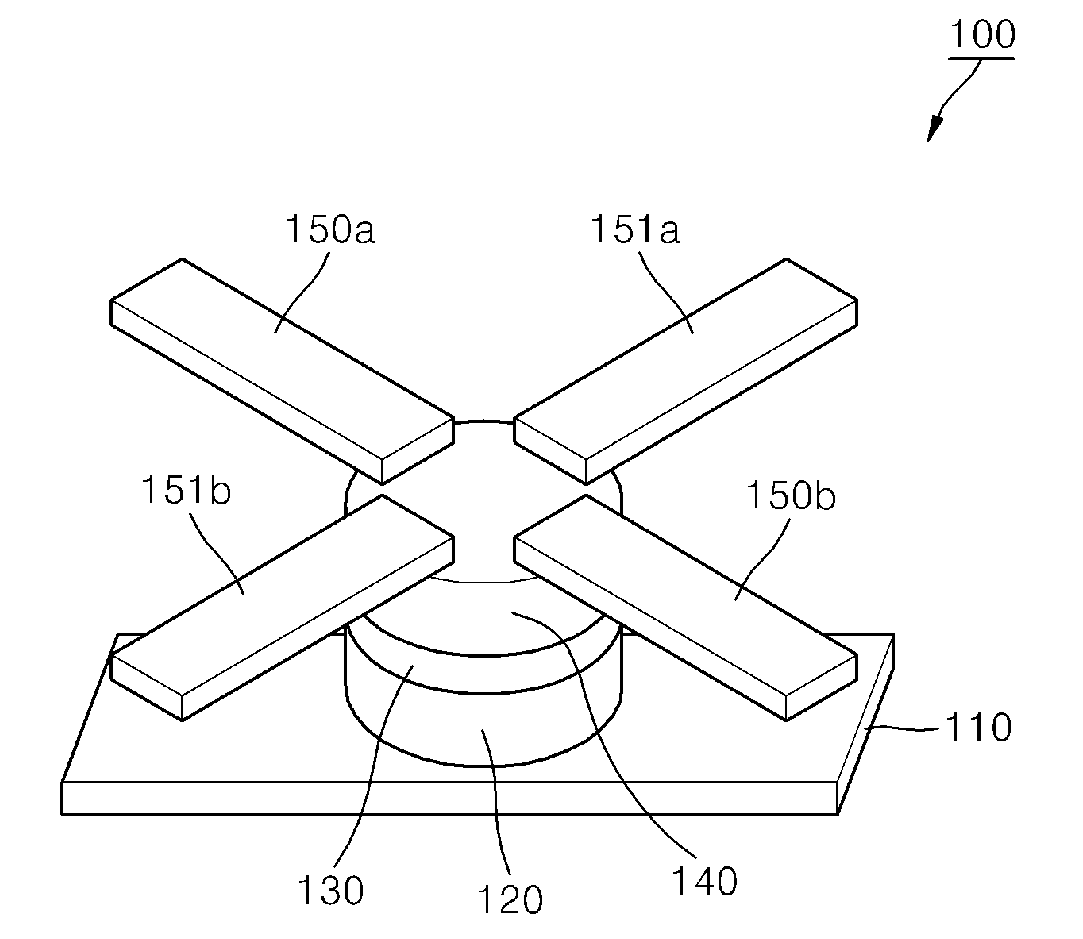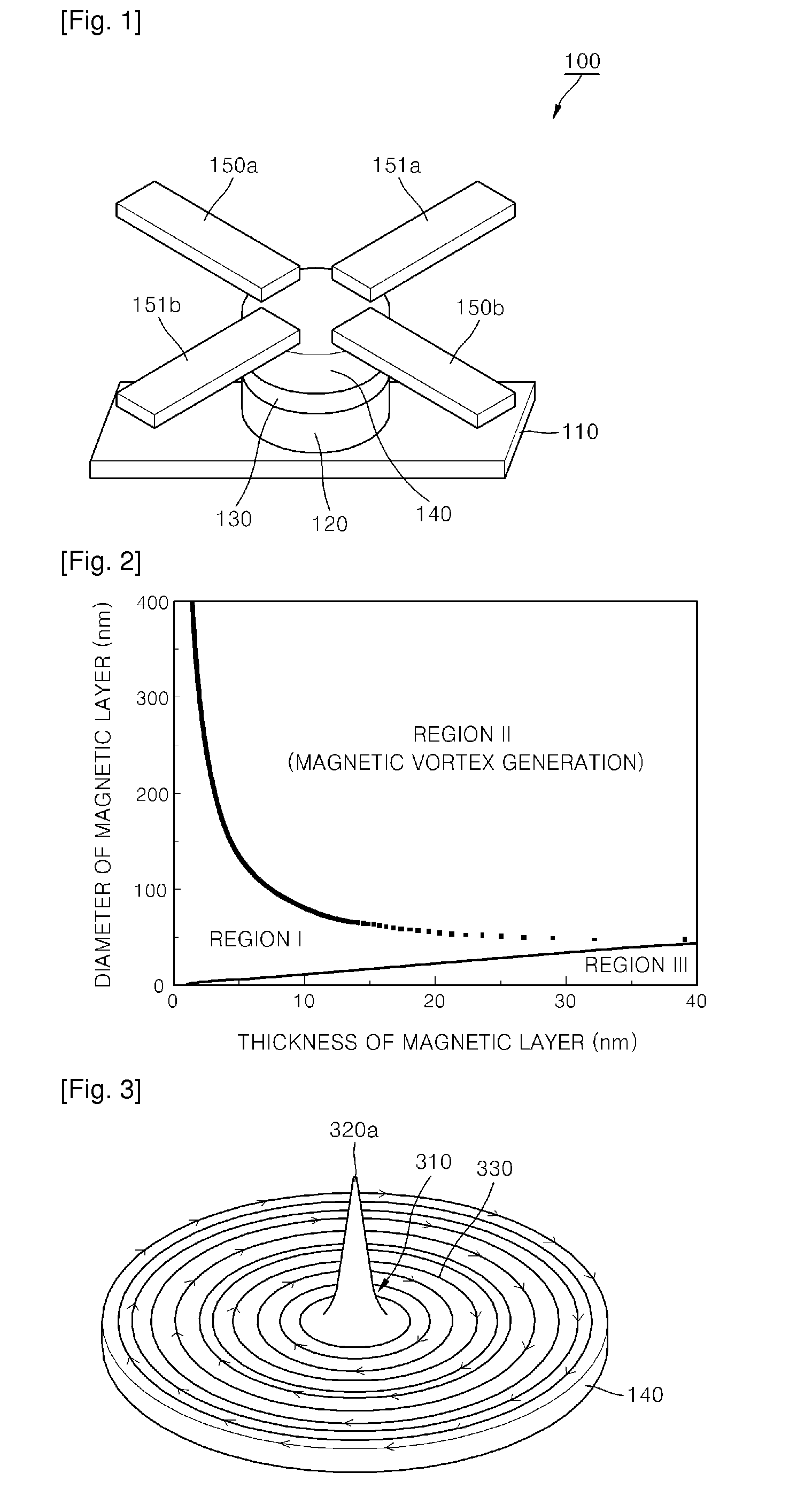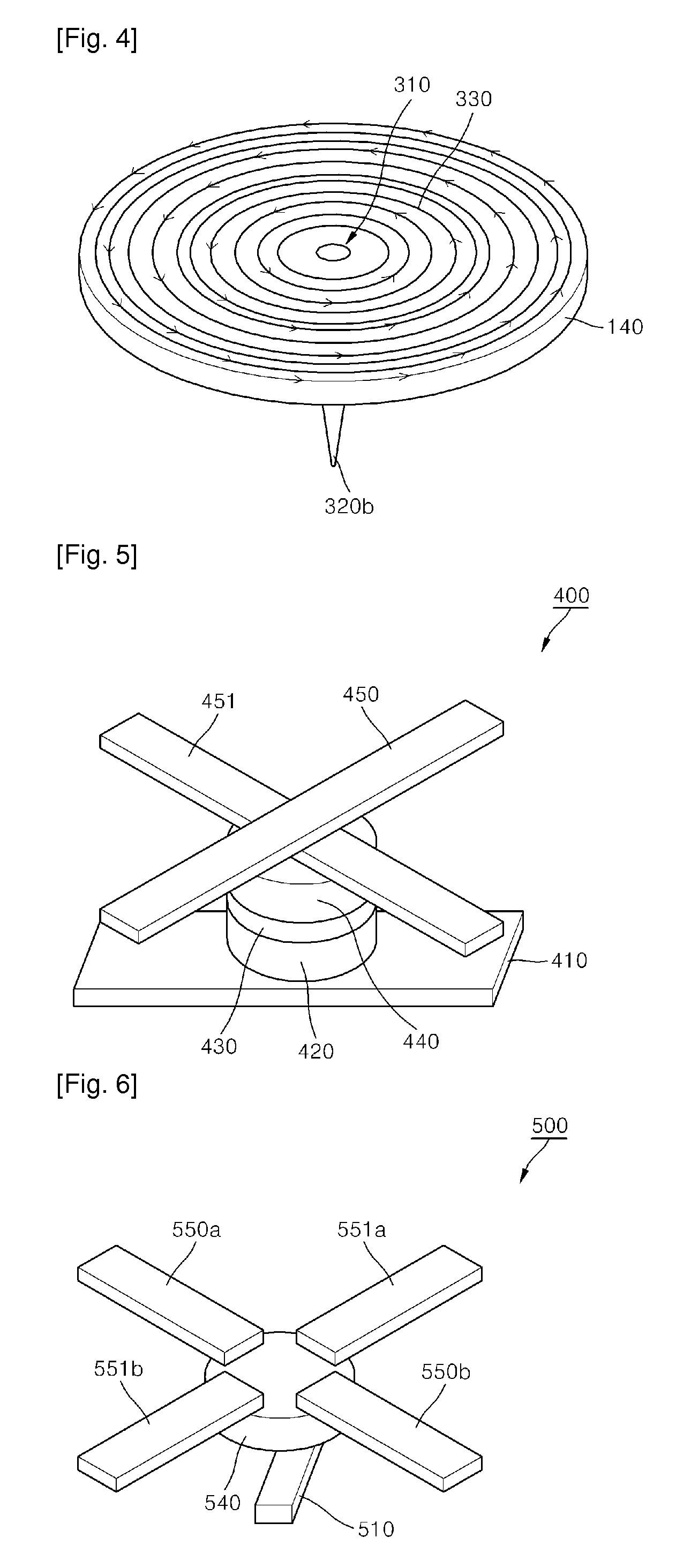Ultrafast magnetic recording element and nonvolatile magnetic random access memory using the magnetic recording element
a magnetic recording element and nonvolatile magnetic technology, applied in the field of magnetic recording elements, can solve the problems of loss of stored data, difficulty in achieving high integration, and difficulty in reading out information stored in the magnetic recording element, and achieve the effects of low power, accurate driving, and simple structur
- Summary
- Abstract
- Description
- Claims
- Application Information
AI Technical Summary
Benefits of technology
Problems solved by technology
Method used
Image
Examples
first embodiment
[0036]Referring to FIG. 1, the magnetic recording element 100 according to the present invention includes a read electrode 110, a magnetic pinned layer 120, an insulating layer 130, a magnetic free layer 140 and drive electrodes 150a, 150b, 151a and 151b.
[0037]The read electrode 110 is shaped in a plate extending in a direction, and is used for reading information stored in the magnetic recording element 100. The read electrode 110 may be formed of at least one of titanium (Ti), gold (Au), copper (Cu) and aluminum (Al), or a composite thereof. Desirably, the read electrode 110 may be composed of a bilayer of Ti and Au.
[0038]The magnetic pinned layer 120 is formed in a plate shape on the read electrode 110. The magnetic pinned layer 120 may be formed in a disk shape. The magnetic pinned layer 120 may be formed of at least one of cobalt (Co), iron (Fe), nickel (Ni), Fe—Ni alloy (i.e., permalloy), Fe—Co (i.e., permendur), Fe—Ni—Co alloy (perminvar), Fe—Ni—Mo alloy (i.e., supermalloy)....
second embodiment
[0070]Referring to FIG. 5, the magnetic recording element 400 according to the present invention includes a read electrode 410, a magnetic pinned layer 420, an insulating layer 430, a magnetic free layer 440 and drive electrodes 450 and 451.
[0071]The read electrode 410, the magnetic pinned layer 420, the insulating layer 430, and the magnetic free layer 440 correspond to the read electrode 110, the magnetic pinned layer 120, the insulating layer 130 and the magnetic free layer 140 included in the magnetic recording element 100 illustrated in FIG. 1, respectively. In the magnetic recording element 400 of FIG. 5, information is also stored in a core orientation of a magnetic vortex formed in the magnetic free layer 440.
[0072]The drive electrodes 450 and 451 included in the magnetic recording element 400 of FIG. 5 may be formed in plurality such that they cross each other while covering a central portion of the top surface of the magnetic free layer 440. Desirably, the two drive electr...
third embodiment
[0076]Referring to FIG. 6, a magnetic recording element 500 according to the present invention includes a magnetic free layer 540, drive electrodes 550a, 550b, 551a and 551b, and a read line 510.
[0077]The magnetic free layer 540 and the drive electrodes 550a, 550b, 551a and 551b included in the magnetic recording element 500 of FIG. 6 respectively correspond to the magnetic free layer 140 and the drive electrodes 150a, 150b, 151a and 151b included in the magnetic recording element 100 in FIG. 1. In the magnetic recording element 500 of FIG. 6, information is also stored in a core orientation of a magnetic vortex formed in the magnetic free layer 540.
[0078]The read line 510 included in the magnetic recording element 500 of FIG. 6 extends in a direction and disposed around the magnetic free layer 540. When a predetermined voltage is applied to the magnetic free layer 540 through the drive electrodes 550a, 550b, 551a and 551b, the magnetic vortex core formed in the magnetic free layer ...
PUM
 Login to View More
Login to View More Abstract
Description
Claims
Application Information
 Login to View More
Login to View More - R&D
- Intellectual Property
- Life Sciences
- Materials
- Tech Scout
- Unparalleled Data Quality
- Higher Quality Content
- 60% Fewer Hallucinations
Browse by: Latest US Patents, China's latest patents, Technical Efficacy Thesaurus, Application Domain, Technology Topic, Popular Technical Reports.
© 2025 PatSnap. All rights reserved.Legal|Privacy policy|Modern Slavery Act Transparency Statement|Sitemap|About US| Contact US: help@patsnap.com



